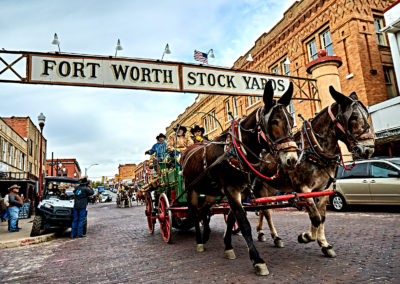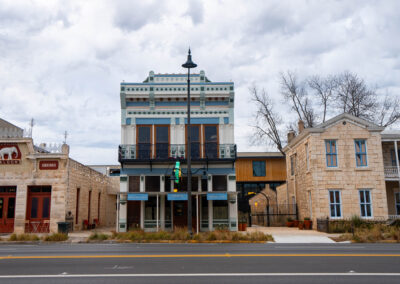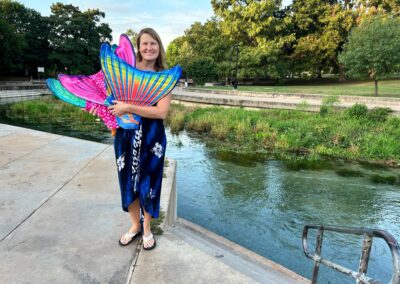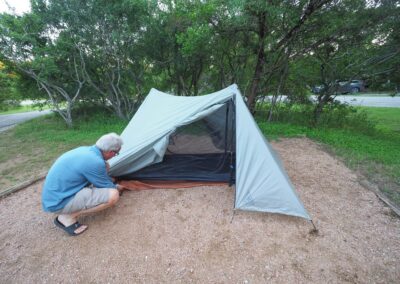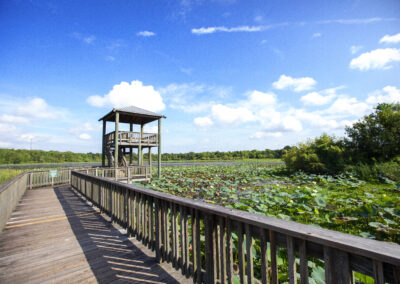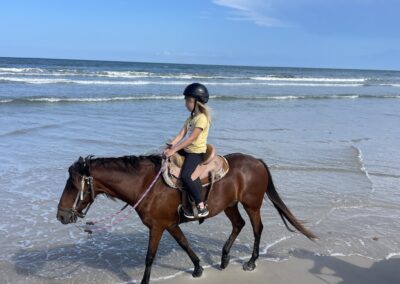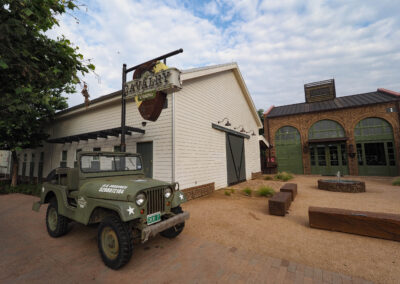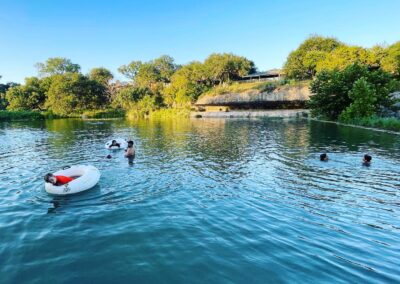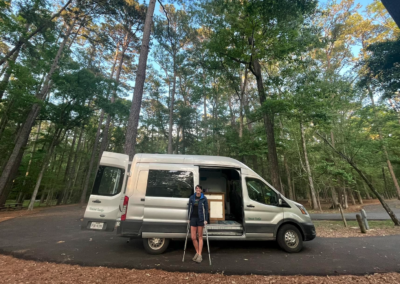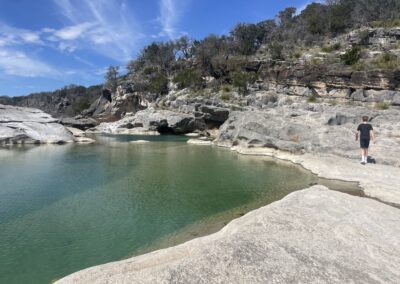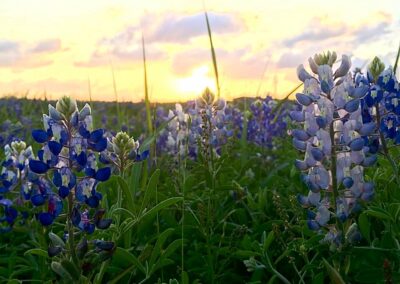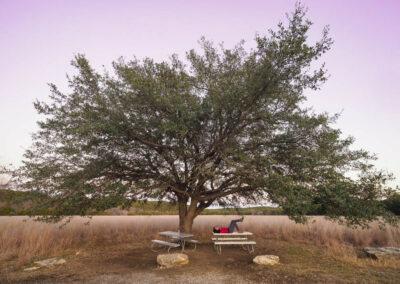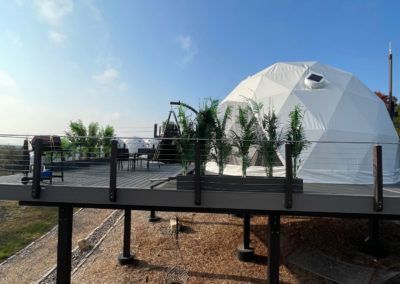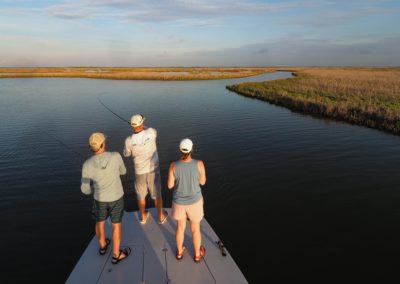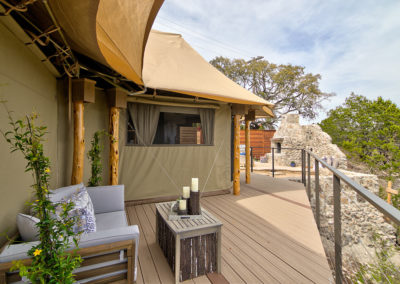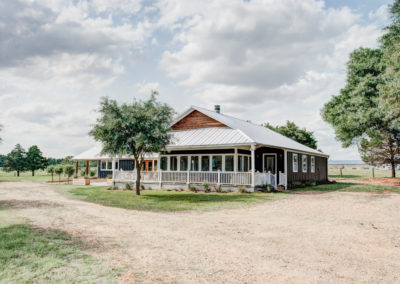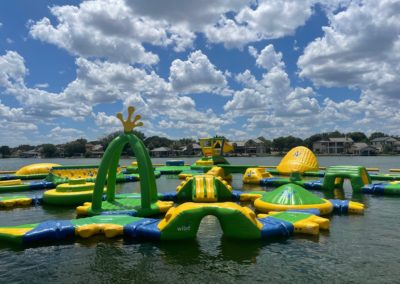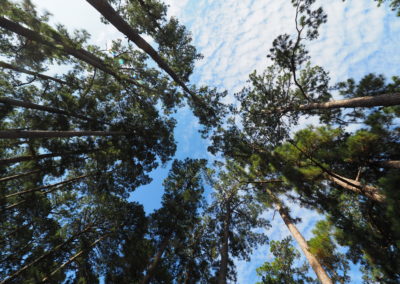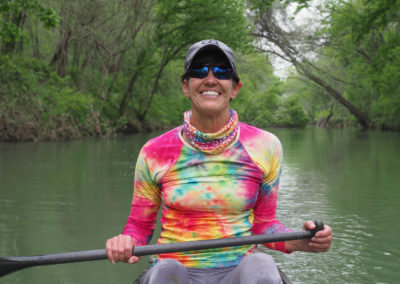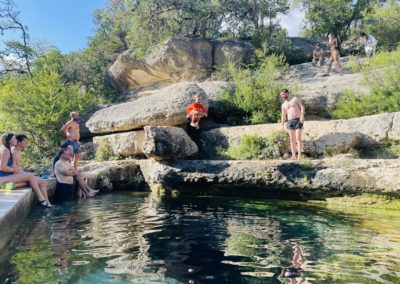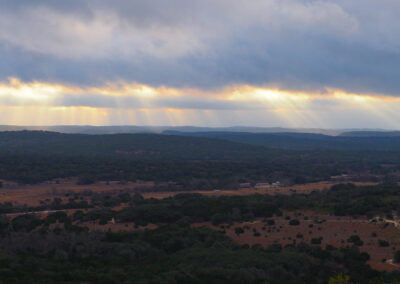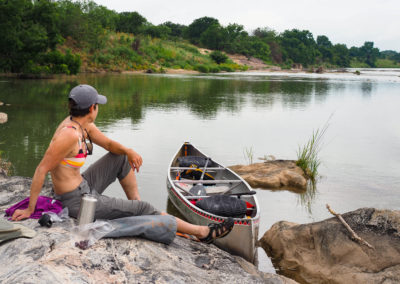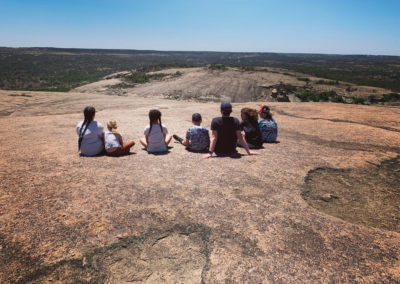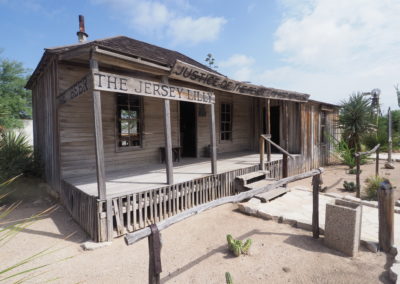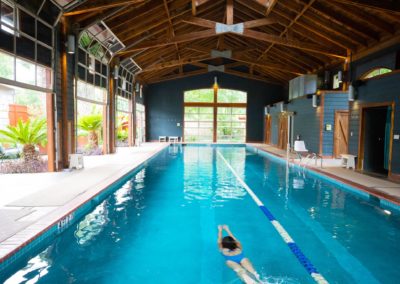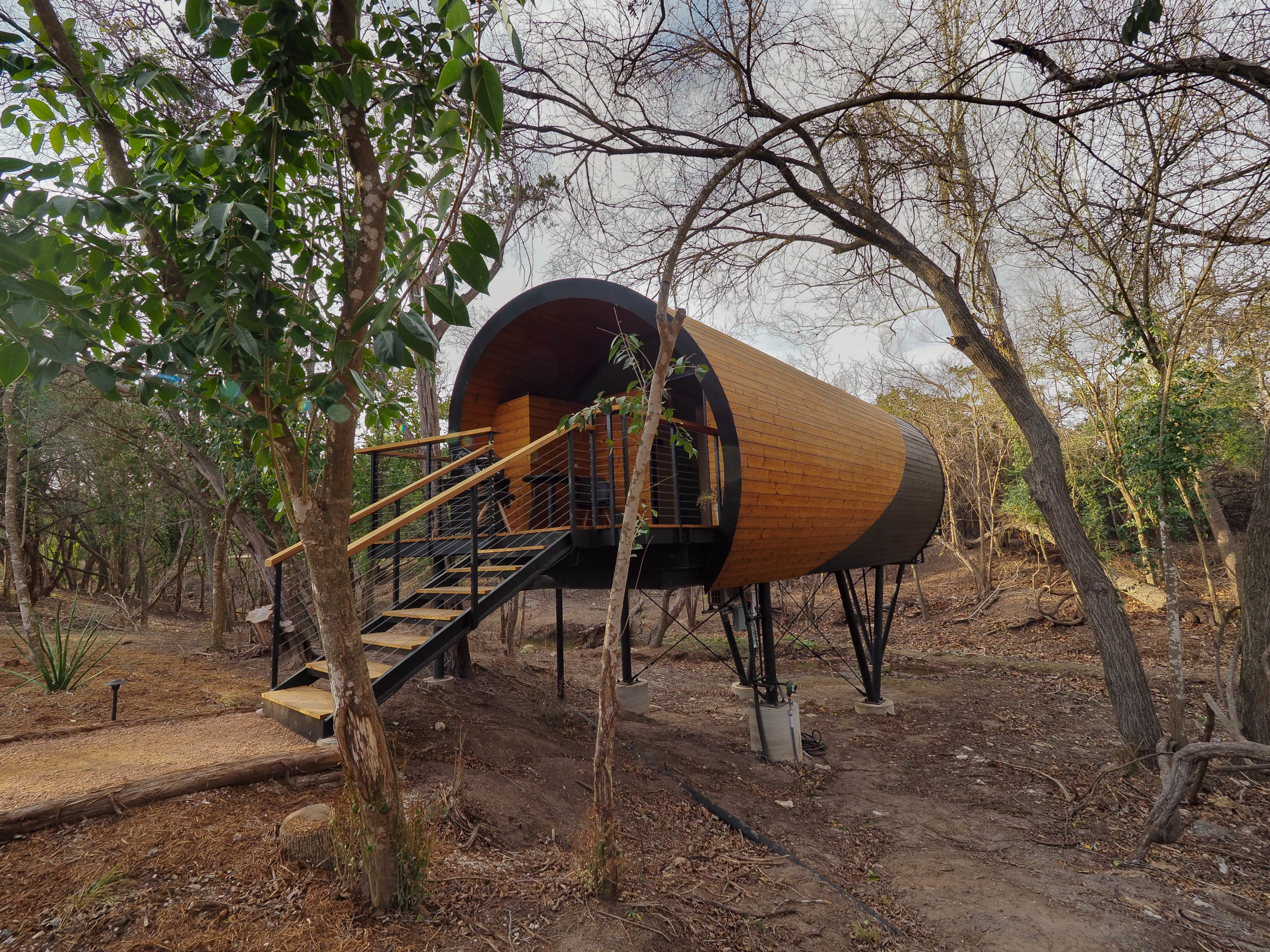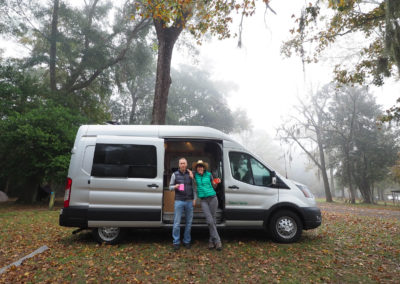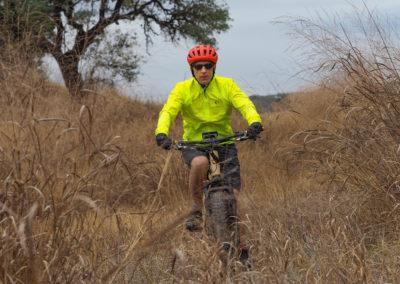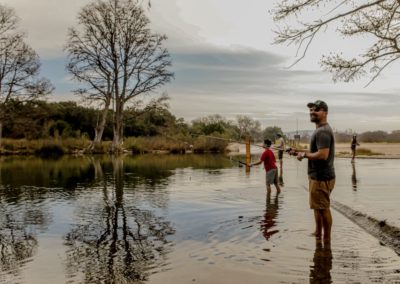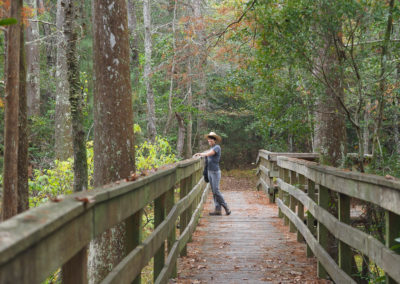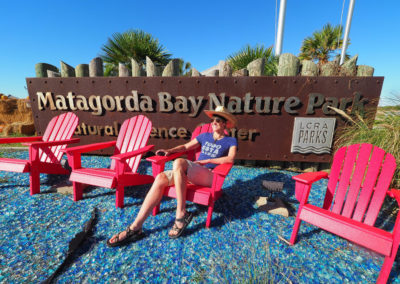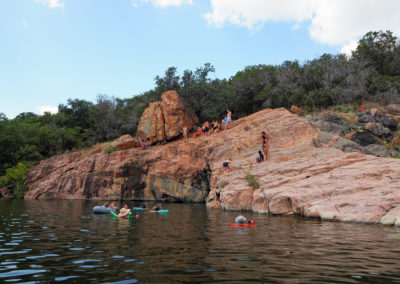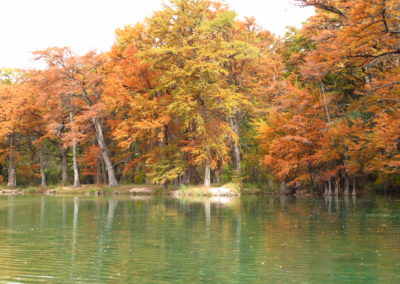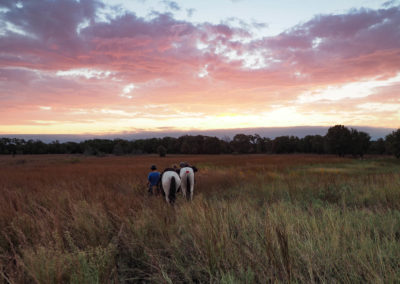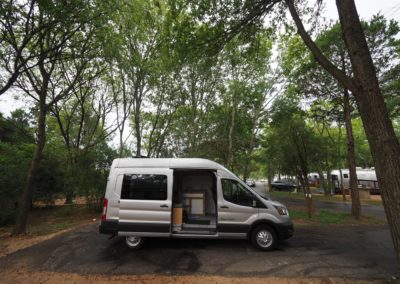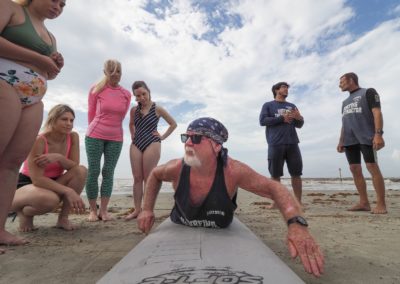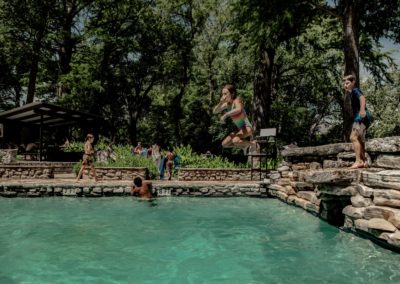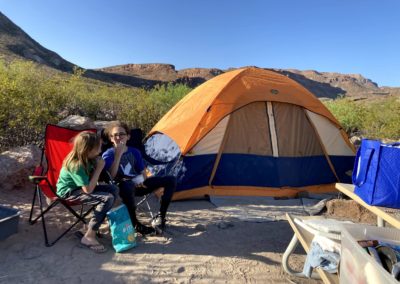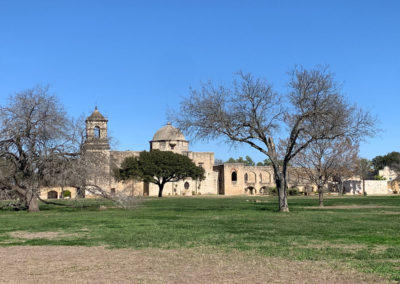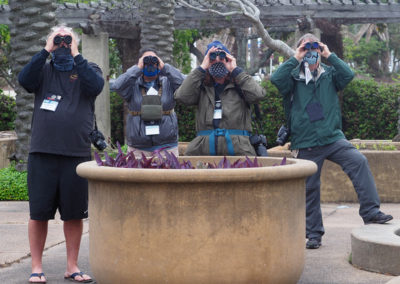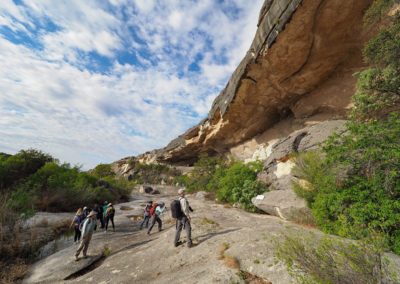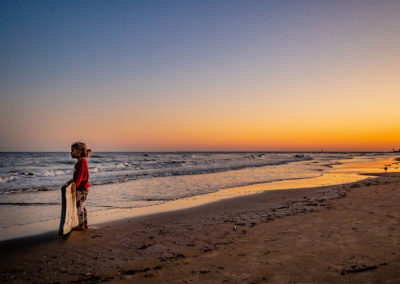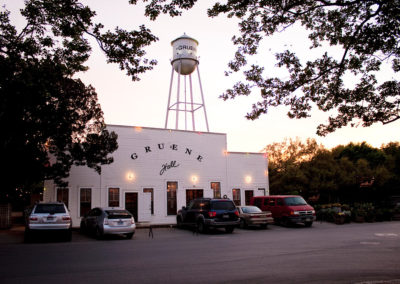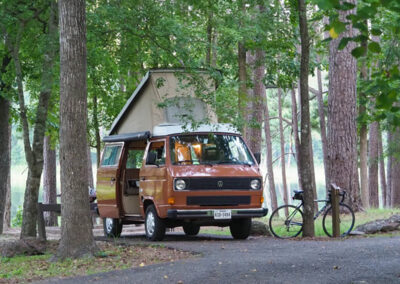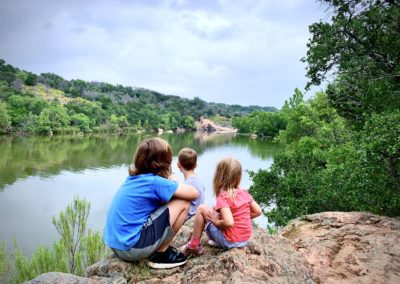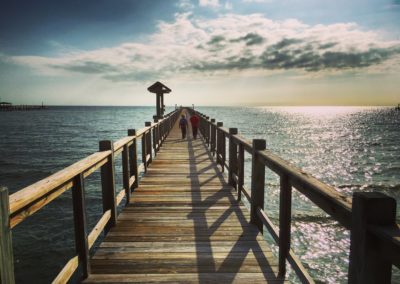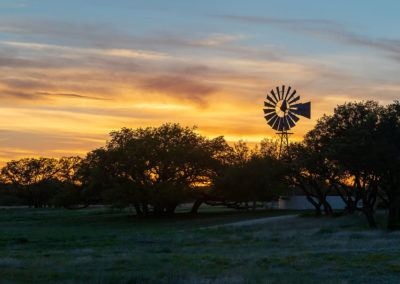
Paddlers glide through a slough at Martin Dies Jr. State Park. Pam LeBlanc photo
Sometimes when I’m searching for parks to explore, I slip into old habits: Head west, or stay in the Hill Country.
It turns out that East Texas has a lot to offer, and Martin Dies Jr. State Park, with its towering pine and cypress trees, murky sloughs, and miles of hiking trails, makes for a tempting destination.
Explore Martin Dies Jr. State Park
The park perches on the edge of the Steinhagen Reservoir, at the junction of the Angelina and Neches Rivers in the Pineywoods region of the state. My husband and I made the four-hour drive from Austin in our trusty camper van, a kitted-out AWD Ford Transit we named Vincent VanGo.
RELATED: Roaming the road in a campervan

Chris LeBlanc steps into Vincent VanGo at Martin Dies Jr. State Park.Pam LeBlanc photo
The park is divided into two main sections, and we nabbed an overnight site in the Hen House Ridge Unit. The camping spots on this side are more tucked into the forest than they are in the Walnut Ridge Unit across Highway 190.
Go for a hike
After securing our spot, we headed to the Walnut Slough Day Use Area to do some hiking. As we made our way to the trailhead, an armadillo trundled through thick grass next to the road. We stopped to watch it root through a layer of leaf litter so thick it disappeared like a swimmer under water. Next we spotted deer, egrets, bats and some impressively large spiders. Alligators live in the sloughs and lake, too, but they stayed hidden during our visit.
The Wildlife Trail that starts at Walnut Slough stretches for 1.5 miles through thick woods. We walked on soft, pine needle-cushioned pathways, listening to squirrels chatter and watching a woodpecker chisel away on a decaying tree. Afterward we paused on the observation deck over a long wooden bridge to admire the reflection on the water. You can also stroll around a small island.

An armadillo roots through the underbrush at Martin Dies Jr. State Park. Pam LeBlanc photo
The park rents canoes and kayaks, and if you take off from the boat ramp at Walnut Slough, you can make a 2.7-mile loop. There are other paddling trails, too. The 5.4-mile Sandy Creek Paddling Trail is the longest and toughest, and it hugs the shoreline then crosses a stretch of open water. The 2.8-mile Neches Paddling Trail meanders through some narrow cuts into the Neches River. And finally, the Cherokee Paddling Trail starts and finishes on the other side of the lake, at the Cherokee Day Use Area, where the fishing is usually good.
Foggy days wrap Martin Dies Jr. State Park in clouds

A cypress tree looks like its floating in the fog at Martin Dies Jr. State Park. Pam LeBlanc photo
I’ve visited Martin Dies Jr. State Park twice, and both times I’ve seen it wrapped in white fog. Cypress trees stand knee-deep in the water and stretch their branches skyward. When fog swirls around them, they look like they’re floating in clouds. It’s surreal.
If you luck out and get a foggy day –– or even if you don’t –– stop by the boat ramp on the west side of the park, just where Highway 190 crosses over the reservoir. It’s a great spot for sunsets, and those floating cypress trees appear here on murky days.
RELATED: Go to Garner this fall for the Frio, foliage and family fun

Pine trees sway in the breeze at Martin Dies Jr. State Park. Pam LeBlanc photo
We fell asleep to the song of frogs and woke up to a chilly morning. After breakfast, we decided to explore some more. The Slough Trail features 16 bridges over marshy terrain. Keep an eye peeled for ‘gators, and if you spot one, keep at least 30 feet away. The trail connects to the Sandy Creek Trail, which leads to an adjoining park operated by the U.S. Army Corps. My advice? Stick to the Slough Trail. That swampy land is more exciting than the power lines you’ll walk beneath on Sandy Creek.
Don’t forget to look up as you go. Those swaying pines will make you feel tiny. And think about the people who lived here thousands of years ago –– first the Caddos, who were known for their skilled pottery work and were forced out in the 1830s, and later the steamboat pilots that came through.
The park’s history
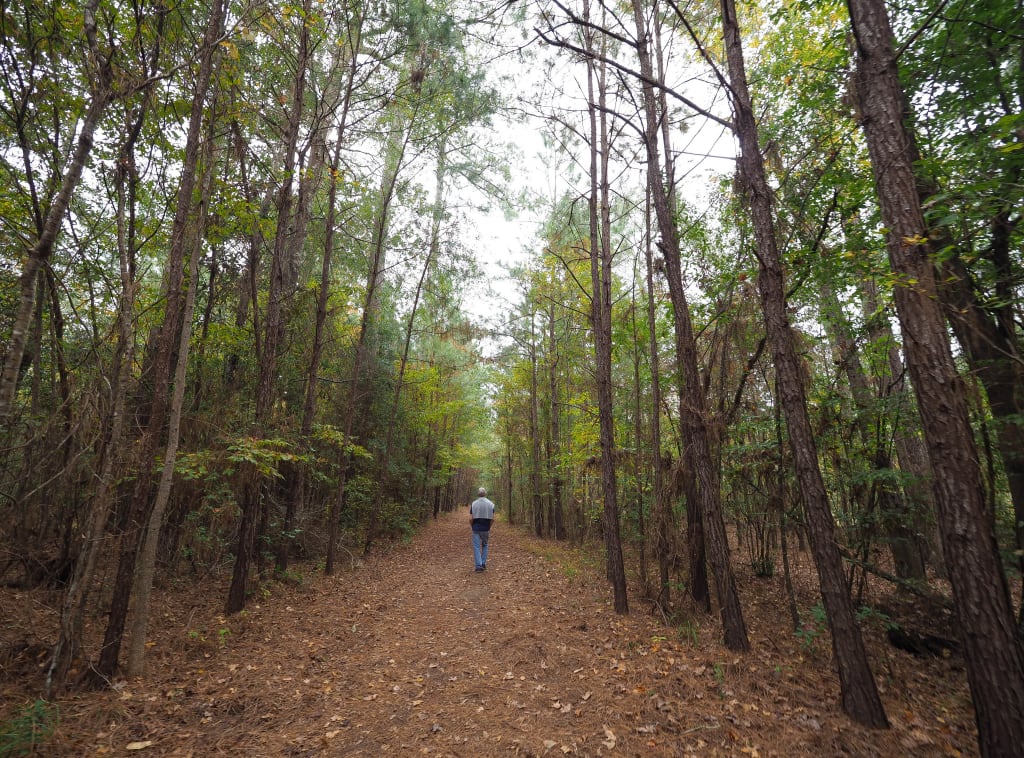
Chris LeBlanc hikes a trail at Martin Dies Jr. State Park. Pam LeBlanc photo
The timber industry took hold after the Civil War, when much of the forest around here was harvested. What you see now is second generation growth.
Martin Dies Jr. State Park is named for an East Texas senator who once rode horses through the woods here. Crews started building the reservoir in 1947, and park construction started in the 1960s. The senator died in 1972.
The grounds are especially beautiful in late fall, when the leaves of oaks, maples, and sweetgums turn red and orange.
It made enough of an impression on me that the next time I’m in the mood to explore a park, I’ll head east instead of west.

Chris LeBlanc looks over a bridge at Martin Dies Jr. State Park. Photo by Pam LeBlanc
If You Go

Getting there:
It takes about 4 hours to drive to Martin Dies, Jr. State Park from Austin. It’s located at 634 Park Road 48 South, between Woodville and Jasper.

Stay:
Reserve one of more than 200 campsites at the park. You can also rent a screened shelter or a cabin. Park admission is $4 for adults; ages 12 and under are free. Campsites start at $14. Make reservations here.
Do:
The park rents canoes and kayaks, or you can bring your own to launch from one of the park’s multiple boat ramps. Anglers can fish for catfish, bass, perch and crappie from small lighted piers or the bank. The Hen House Ridge Unit has a designated swim area, although there are no lifeguards on duty. Hiking, biking, and birdwatching are also popular.
Eat & Drink:
Bring groceries to cook on the grills provided at each campsite.

Pro Tip:
From Austin, take the long route through Taylor and Rockdale. It’ll take an extra 20 minutes, but you can stop at Brett’s Backyard Bar-B-Que at 440 W. Cameron in Rockdale. Opt for the brisket, which earned it a spot on Texas Monthly’s 2021 list of 50 best barbecue joints.











